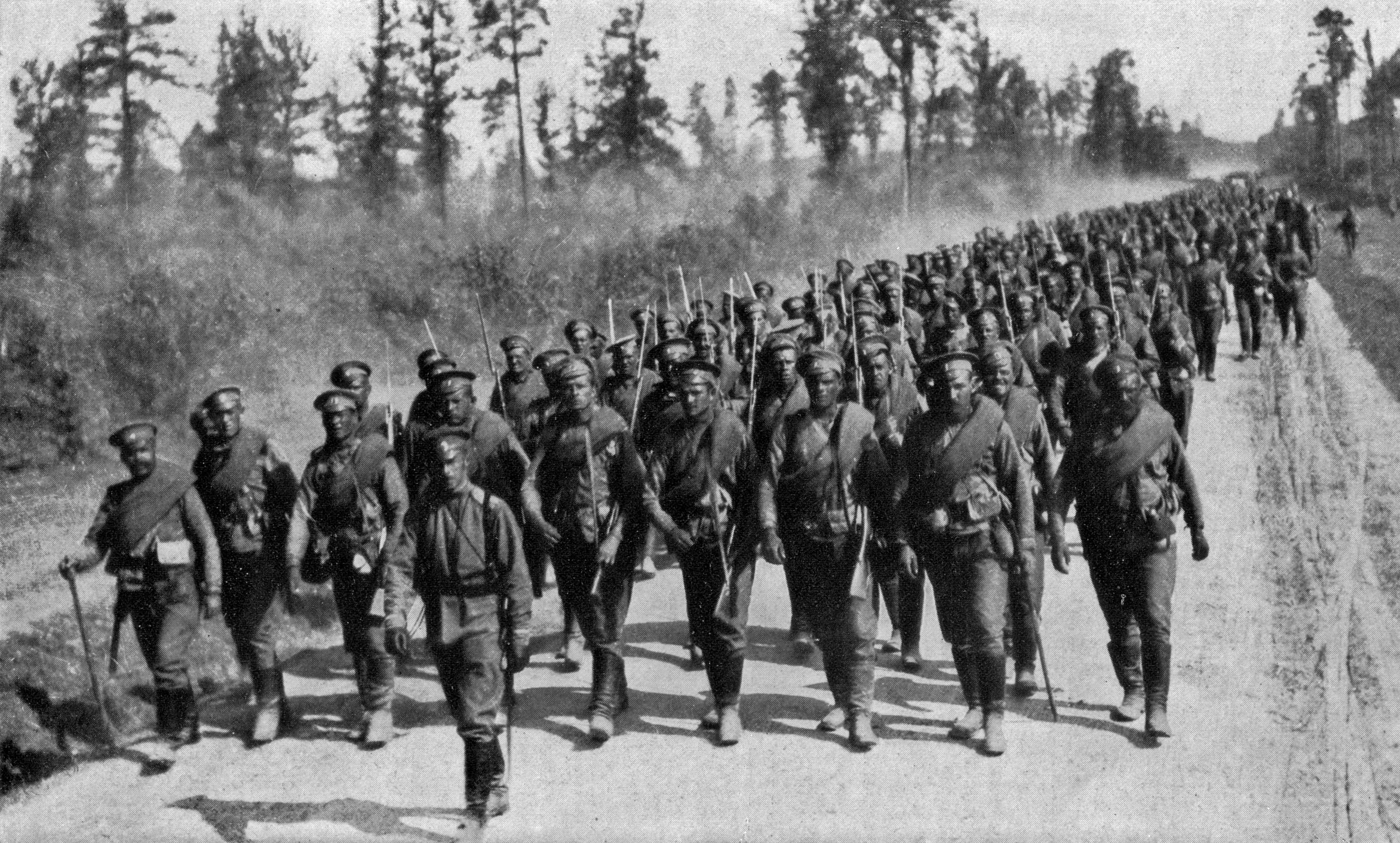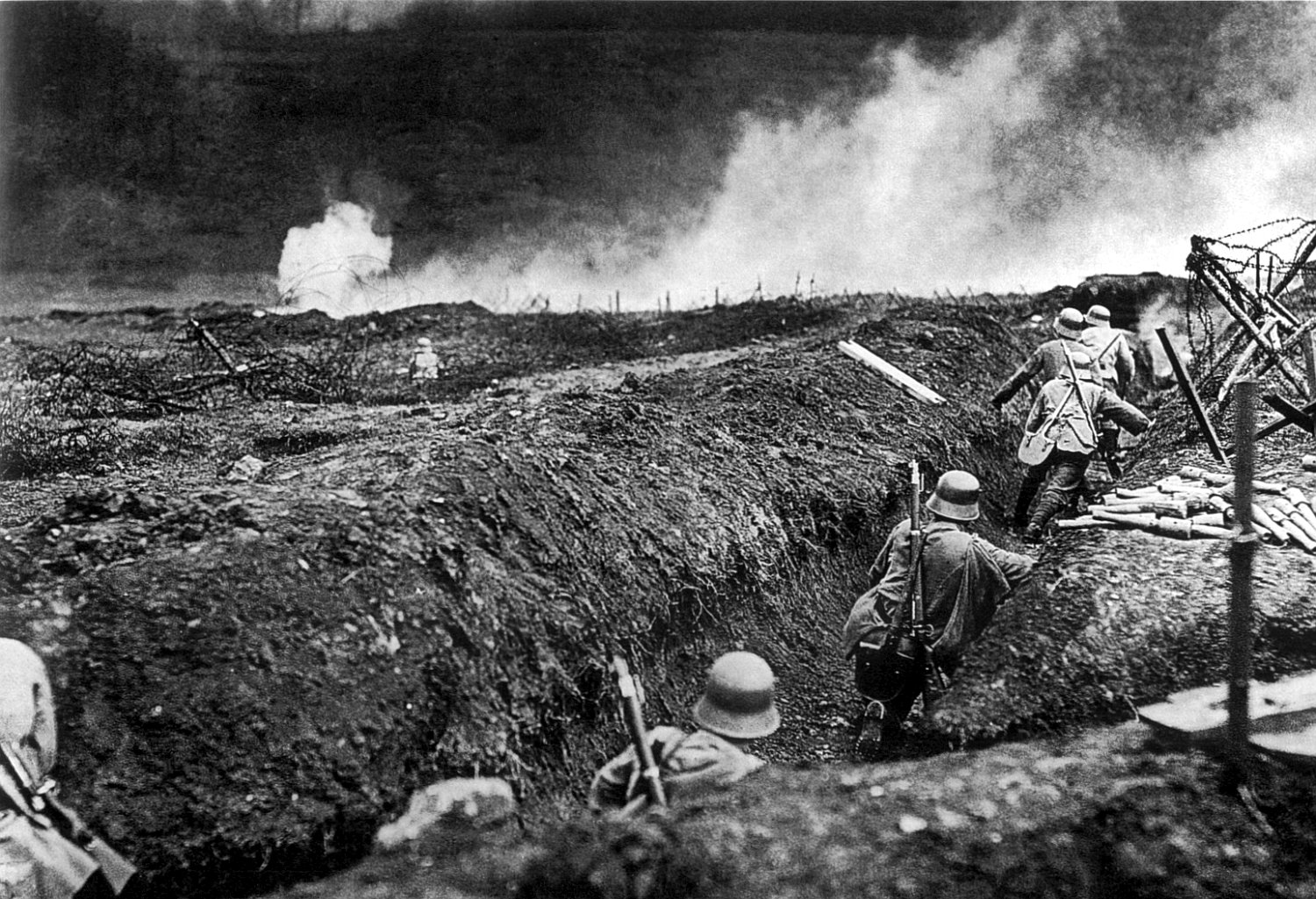|
Riga Offensive (1917)
The Riga offensive (), also called the Jugla Offensive or the Battle of Riga (), took place in early September 1917 and was the last major campaign on the Eastern Front of World War I before the Russian Provisional Government and its army began disintegrating. The battle was fought between Oskar von Hutier's German Eighth Army and Dmitri Parsky's Russian Twelfth Army. The Russian forces in Latvia were under the command of Vladislav Klembovsky's Northern Front, tasked with guarding the approaches to the Russian capital Petrograd. The Imperial German Army advanced through most of Lithuania and southern Latvia during the Russian Great Retreat in the summer of 1915, putting them in the vicinity of one of the largest industrial cities of the Russian Empire. The Twelfth Army was then tasked with defending Riga, though the situation on the northern frontier of the Eastern Front remained static until early 1917. German quartermaster-general Erich Ludendorff gave the order for an o ... [...More Info...] [...Related Items...] OR: [Wikipedia] [Google] [Baidu] |
Eastern Front (World War I)
The Eastern Front or Eastern Theater, of World War I, was a theater (warfare), theater of operations that encompassed at its greatest extent the entire frontier between Russian Empire, Russia and Kingdom of Romania, Romania on one side and Austria-Hungary, Kingdom of Bulgaria, Bulgaria, the Ottoman Empire, and German Empire, Germany on the other. It ranged from the Baltic Sea in the north to the Black Sea in the south, involved most of Eastern Europe, and stretched deep into Central Europe. The term contrasts with the Western Front (World War I), Western Front, which was being fought in Belgium and French Third Republic, France. Unlike the static warfare on the Western Front, the fighting on the geographically larger Eastern Front was maneuver warfare, more dynamic, often involving the flanking and encirclement of entire formations, and resulted in over 100,000 square miles of territory becoming occupied by a foreign power. At the start of the war Russia launched offensives agai ... [...More Info...] [...Related Items...] OR: [Wikipedia] [Google] [Baidu] |
Imperial German Army
The Imperial German Army (1871–1919), officially referred to as the German Army (), was the unified ground and air force of the German Empire. It was established in 1871 with the political unification of Germany under the leadership of Kingdom of Prussia, Prussia, and was dissolved in 1919, after the defeat of the German Empire in World War I (1914–1918). In the Federal Republic of Germany, the term refers to the German Army, the land component of the . Formation and name The states that made up the German Empire contributed their armies; within the German Confederation, formed after the Napoleonic Wars, each state was responsible for maintaining certain units to be put at the disposal of the Confederation in case of conflict. When operating together, the units were known as the German Federal Army, Federal Army (). The Federal Army system functioned during List of wars: 1800–1899, various conflicts of the 19th century, such as the First Schleswig War from 1848 to 1852. ... [...More Info...] [...Related Items...] OR: [Wikipedia] [Google] [Baidu] |
Austria-Hungary
Austria-Hungary, also referred to as the Austro-Hungarian Empire, the Dual Monarchy or the Habsburg Monarchy, was a multi-national constitutional monarchy in Central Europe#Before World War I, Central Europe between 1867 and 1918. A military and diplomatic alliance, it consisted of two sovereign states with a single monarch who was titled both the Emperor of Austria and the King of Hungary. Austria-Hungary constituted the last phase in the constitutional evolution of the Habsburg monarchy: it was formed with the Austro-Hungarian Compromise of 1867 in the aftermath of the Austro-Prussian War, following wars of independence by Hungary in opposition to Habsburg rule. It was dissolved shortly after Dissolution of Austria-Hungary#Dissolution, Hungary terminated the union with Austria in 1918 at the end of World War 1. One of Europe's major powers, Austria-Hungary was geographically the second-largest country in Europe (after Russian Empire, Russia) and the third-most populous (afte ... [...More Info...] [...Related Items...] OR: [Wikipedia] [Google] [Baidu] |
German Spring Offensive
The German spring offensive, also known as ''Kaiserschlacht'' ("Kaiser's Battle") or the Ludendorff offensive, was a series of German Empire, German attacks along the Western Front (World War I), Western Front during the World War I, First World War, beginning on 21 March 1918. Following American entry into World War I, American entry into the war in April 1917, the Germans decided that their only remaining chance of victory was to defeat the Allies of World War I, Allies before the United States could ship soldiers across the Atlantic and fully deploy its resources. The Imperial German Army, German Army had gained a temporary advantage in numbers as nearly 50 Division (military), divisions had been freed by the Russian defeat and withdrawal from the war with the Treaty of Brest-Litovsk. There were four German offensives, codenamed ''Operation Michael, Michael'', ''Operation Georgette, Georgette'', ''Gneisenau'', and ''Blücher-Yorck''. ''Michael'' was the main attack, which wa ... [...More Info...] [...Related Items...] OR: [Wikipedia] [Google] [Baidu] |
Western Front (World War I)
The Western Front was one of the main Theatre (warfare), theatres of war during World War I. Following the outbreak of war in August 1914, the Imperial German Army, German Army opened the Western Front by German invasion of Belgium (1914), invading Luxembourg and Belgium, then gaining military control of important industrial regions in Third Republic of France, France. The German advance was halted with the First Battle of the Marne, Battle of the Marne. Following the Race to the Sea, both sides dug in along a meandering line of fortified trench warfare, trenches, stretching from the North Sea to the Swiss frontier with France, the position of which changed little except during early 1917 and again in 1918. Between 1915 and 1917 there were several offensives along this Front (military), front. The attacks employed massive artillery bombardments and massed infantry advances. Entrenchments, machine gun emplacements, barbed wire, and artillery repeatedly inflicted severe casualties ... [...More Info...] [...Related Items...] OR: [Wikipedia] [Google] [Baidu] |
Stormtrooper (Imperial Germany)
Stormtroopers ( or ''Stoßtruppen'') were the only elite shock troops of the Imperial German Army (Deutsches Heer) that specialized in commando style raids, infiltrating the trenches and wiping out the enemy quickly, maneuver warfare, reconnaissance, and shock tactics. In the last years of World War I, ''Stoßtruppen'' (" shock troopers" or "shove troopers") were trained to use infiltration tactics – part of the Germans' improved method of attack on enemy trench warfare. The German Empire entered the war certain that the conflict would be won in the course of great military campaigns, thus relegating results obtained during individual clashes to the background; consequently the best officers, concentrated in the German General Staff, placed their attention on maneuver warfare and the rational exploitation of railways, rather than concentrating on the conduct of battles. This attitude made a direct contribution to operational victories of Germany in Russia, Romania, Serbia and ... [...More Info...] [...Related Items...] OR: [Wikipedia] [Google] [Baidu] |
West Estonian Archipelago
The West Estonian archipelago (, also Moonsund archipelago) is a group of Estonian islands located in the Baltic Sea around Väinameri. The total area is about . The archipelago is composed of the islands Saaremaa, Hiiumaa, Muhu, Vormsi and about 900 other smaller islands. Retrieved 27 January 2023 The archipelago is separated from the Estonian mainland by the Väinameri Sea. Protected areas established the[...More Info...] [...Related Items...] OR: [Wikipedia] [Google] [Baidu] |
Operation Albion
Operation Albion was a German air, land and naval operation in the First World War, against Russian forces in October 1917 to occupy the West Estonian Archipelago. The campaign aimed to occupy the Baltic islands of Saaremaa (Ösel), Hiiumaa (Dagö) and Muhu (Moon). The three islands were part of the Russian Empire and strategically dominated the central and northern Baltic Sea. The land campaign opened with German landings at the Tagalaht (Tagga) bay on the island of Saaremaa (Ösel), on 12 October, after extensive naval operations to clear mines and subdue coastal artillery batteries. German forces secured the island by 16 October and the Russian army evacuated Muhu (Moon) on 20 October. After two failed attempts, the German army landed on Hiiumaa (Dagö) on 12 October, capturing the island the following day. The Russian Baltic Fleet had to withdraw from the Suur Strait after its losses at the Battle of Moon Sound. The Germans claimed 20,000 prisoners and 100 guns ... [...More Info...] [...Related Items...] OR: [Wikipedia] [Google] [Baidu] |
Daugava
The Daugava ( ), also known as the Western Dvina or the Väina River, is a large river rising in the Valdai Hills of Russia that flows through Belarus and Latvia into the Gulf of Riga of the Baltic Sea. The Daugava rises close to the source of the Volga. It is in length, of which are in Latvia and in Russia. It is a westward-flowing river, tracing out a great south-bending curve as it passes through northern Belarus. The city of Ķekava is located 6 miles south of the west bank of the river. Latvia's capital, Riga, bridges the river's estuary four times. Built on both riverbanks, the city centre is from the river's mouth and is a significant port. Etymology According to Max Vasmer's ''Etymological Dictionary'', the toponym Dvina cannot stem from a Uralic language; instead, it possibly comes from an Indo-European word which used to mean 'river' or 'stream'. The name ''Dvina'' strongly resembles '' Danuvius'' which is itself derived from the Proto-Indo-European ''*dānu ... [...More Info...] [...Related Items...] OR: [Wikipedia] [Google] [Baidu] |






